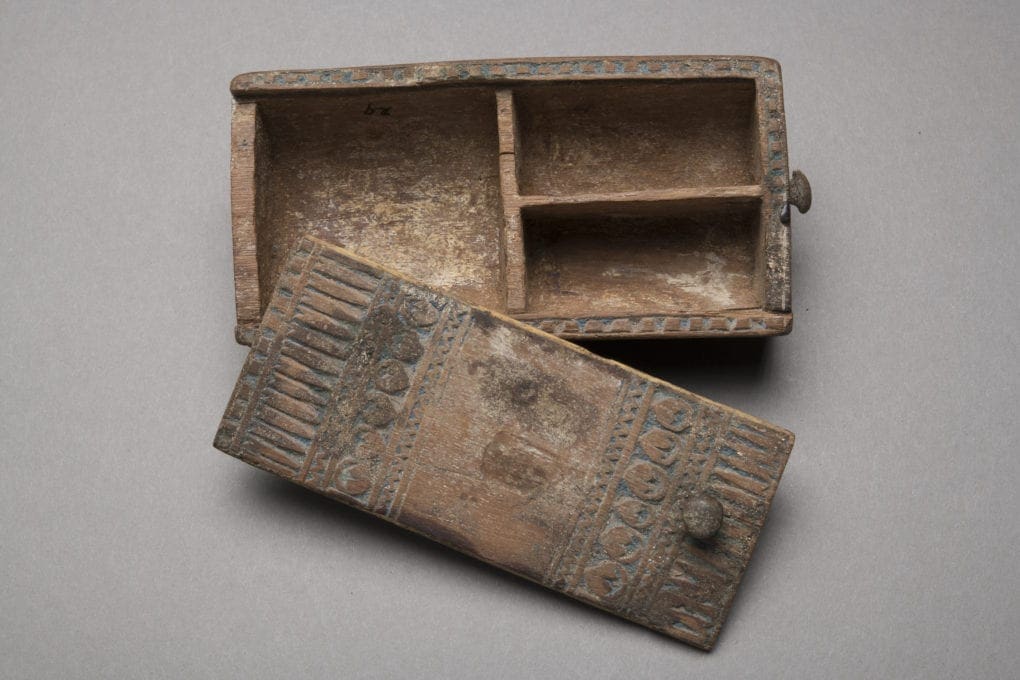Providing for the Afterlife: Ancient Egyptian works from Eton College
Cosmetic Box
By Ashley Fiutko Arico, Monica Herrera, Sanchita Balachandran and Skylar Hurst

Description
Hemi-cylindrical in shape, this lidded box was created for the storage of cosmetics. The interior of the container is divided into three compartments: one large and the other two half its size. A recess at one of the short ends of the box allows the flat, rectangular lid to be slotted into place. The exterior of the box and lid are decorated with bands of intricately carved relief consisting of lozenge-shaped petals and mandrake fruits. The designs are highlighted by the addition of Egyptian blue pigment to the incised areas. When closed, the lid and box would have been secured by a string or cord connecting two knobs, one projecting from the end of the box and the other from the top of its lid.

Technical Research
Recent technical study of this object by undergraduate students Monica Herrera (Class of 2018) and Skylar Hurst (Class of 2020) revealed the extent to which the box was decorated with Egyptian blue, the first synthetic pigment, and one that was traded extensively in the ancient world for its vibrant color. Using a technique called visible infrared luminescence imaging, it was possible to see the thick overall application of this pigment on the carved exterior surfaces of the box; all of the glowing white areas were painted with Egyptian blue. Additional examination of the pigment with portable x-ray fluorescence confirms that it is composed of copper, calcium, and silicon, which likely confirms Egyptian blue which is a calcium copper silicate. The interior of the box appears to have been painted a different color, possibly yellow, which would have made for a lively color contrast.